
views
Identifying an Allergic Reaction

Recognize the symptoms of a skin allergy. Some animals that receive topical flea and tick preventatives may experience an allergic reaction at the site of application. As the allergic reaction worsens, the symptoms may spread to other parts of the body. If your pet is having an allergic reaction, contact your vet immediately. Signs of a skin allergy include: Hives Hair loss at the application site Congestion or sneezing Excessive itching and scratching Unusual sensitivity Shock Respiratory ailments
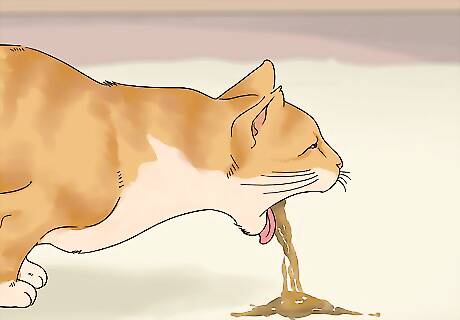
Identify a digestive allergy. Topical preventative products aren't the only potential hazard. Some dogs that receive oral preventative products experience adverse digestive reactions to the product. If your dog has a reaction to an oral product, contact your vet right away. Signs of an allergic reaction to an oral product typically involve digestive problems, including: Vomiting Diarrhea Loss of appetite
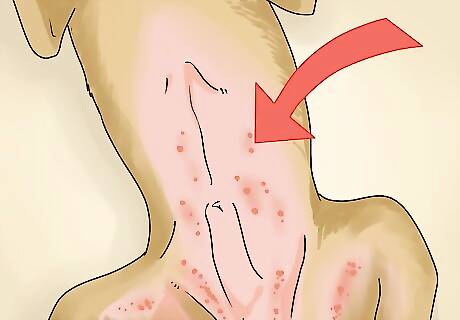
Rule out flea allergies. Some cats and dogs experience a condition known as flea allergy dermatitis. This condition is an allergy to the saliva in fleas, and when a pet with this condition gets bitten, it experiences an adverse reaction. Signs of flea allergy dermatitis in dogs include hair loss, thick skin, redness, and hot spots on the rear end, tail, thighs, and abdomen. Cats can be harder to diagnose. Signs typically include hair loss due to frequent and excessive licking (especially on the back) and tiny red crusts on the back, though these crusts are not always present. If you think your pet is having an allergic reaction to a flea bite, talk to your vet about how to safely prevent fleas. Your vet may also prescribe antibiotics for skin infections and/or medicated shampoos to treat inflammation.
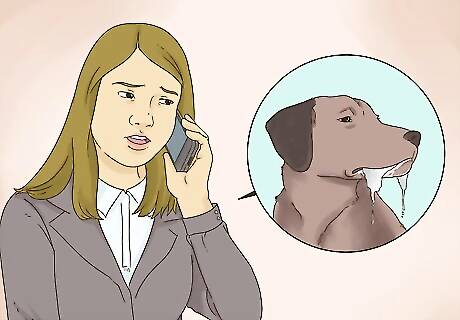
Know the signs of flea and tick preventative poisoning. If your pet is particularly sensitive to flea and tick preventatives, or if you've accidentally administered too much of a preventative product (including through the combination of multiple products), call your vet immediately. An animal that has been poisoned by or overdosed on flea and tick preventatives will need immediate medical attention. Common signs of poisoning in animals include: Excessive salivation and/or drooling Dilated pupils Tremors Vomiting Shivering Skin irritation Hiding from humans
Treating the Allergic Reaction

Bathe pets with topical allergies. If your pet is having a topical allergy to flea and tick preventatives, the first thing you'll need to do is to remove the collar or the treatment and wash any residual preventative product off the animal's body. You can do this in the bathtub or shower, but it should be done as soon as possible to minimize your pet's adverse reaction. Use a mild soap to wash any areas where the product was applied. Thoroughly rinse the area with copious amounts of water, ensuring that all of the soap (and the preventative product) have been rinsed off. Gently dry your pet with a clean, dry towel. Be extra cautious when toweling off the area where the product was applied, as it may have caused skin sensitivity in your pet.

Take your pet to the vet. Whether your pet experiences topical or digestive reactions, it's important to get your pet to the veterinarian as soon as possible. Your vet will be able to treat any adverse side effects associated with the allergic reaction and may be able to recommend alternative preventative treatments. In some severe cases, the dog may need anti-inflammatory medications that only a veterinarian can prescribe.

Monitor your pet's recovery. Your veterinarian may recommend medication or topical treatments to help soothe your pet's adverse reaction. Follow your vet's advice and be sure to read the instructions any products they prescribe or recommend.
Preventing Fleas and Ticks Safely

Follow the instructions carefully. When using any flea and tick preventative, it's important to follow the written instructions exactly as they're written. You should always read the instructions before administering any product. Even if you've used a product before, the directions or usage guidelines may have changed. Only use one application per pet. Make sure it's for the right animal, as cats and dogs should receive different products. Use the right size or dose for each application. For example, don't split a large dog application between two small dogs or use two small dog applications for one large dog. Closely monitor your pet after you've administered any flea and tick preventative to ensure that it does not experience any adverse side effects. Always talk to your vet before using a preventative product on animals that are old, weak, sick, nursing, or on medication. Ask your vet about how to prevent fleas and ticks on pets that have had allergic reactions in the past.
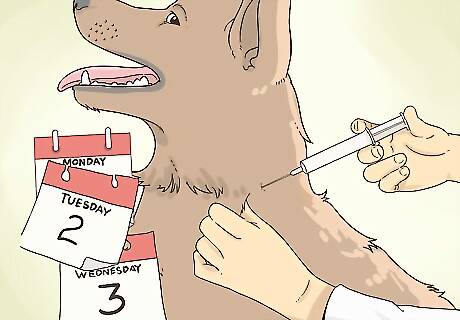
Consider the timing of applications. Timing can be a factor in how your pet reacts to flea and tick preventatives. Many pets suffering from adverse reactions experience these problems when the treatment is used too soon before or after administering other products or vaccinations. If you must give your pet multiple medicinal products, space out their use by at least 7 days. If going to the vet, make sure your pet does not receive a vaccination on the same day as any preventative products. An abnormal body temperature can also lead to adverse reactions to preventative products. Never administer flea and tick preventatives immediately after your pet has been bathed, sedated, or anesthetized.
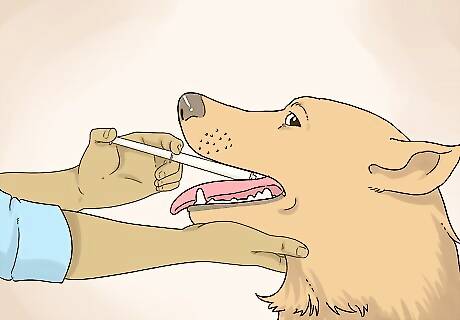
Switch treatment methods. Sometimes pets that have an adverse reaction to one type of preventative can handle a different application method. For example, if your pet did not do well with a topical product, try an oral product. If oral products have caused problems for your pet, try switching to a topical product. Always talk to your vet before administering any flea and tick preventative if your pet has experienced problems in the past. Give oral products with food. This can help reduce the risk of digestive problems. Some experts recommend administering an over-the-counter antacid like Pepcid shortly before administering an oral preventative product.

Try a natural alternative. Some animals with severe allergies to both oral and topical flea and tick preventatives may need a non-medicated preventative. Even though natural alternatives are not technically medicated, you should still consult a veterinarian before using any product on your pet. You can find vets that specialize in holistic treatments by searching online or checking your local phone book.Some natural alternatives that your vet may recommend to prevent fleas and ticks include: herbal black walnut quassia bark diatomaceous earth essential oils


















Comments
0 comment